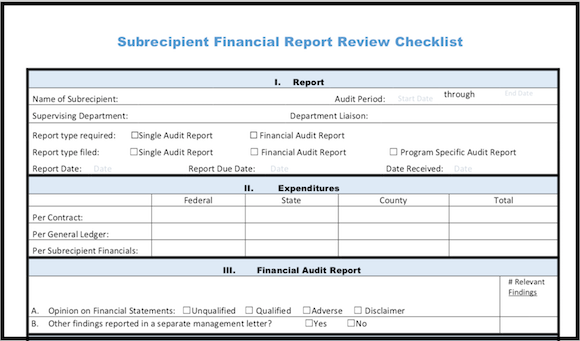|
A local government’s system of assessing and collecting imposed fees and fines needs to treat people fairly. Everyone can agree to that. But how do you know if your government is fair? This blog post summarizes a recent report published in the Government Finance Review (GFR) magazine by Shayne C. Kavanagh, entitled Financial Policies for Imposed Fees, Fines and Asset Forfeitures: The Basis for Building Trust with the Public and Fair Treatment of All Citizens. Imposed fees and fines have the potential to be used unfairly and, thereby, “reduce citizens’ trust in government, seriously harm the lives of disadvantaged citizens, and worsen the problems that public services are intended to solve.”
When local governments find their traditional tax sources constrained, they tend to rely more on fines and/or imposed fees as revenue-raising tools, a role for which they are not well suited. Fees and fines can have considerable impacts on a community, especially and – disproportionately so – on its most vulnerable citizens. While taxes have traditionally been aligned with some ability to pay (e.g., income taxes increase as income increase, property taxes increase with property values, and sales taxes vary proportionally to what is spent on goods and services), the connection between the ability to pay and the cost is inverted with fines and imposed fees. For wealthy citizens, fines or imposed fees may be no more than a nuisance. For low-income citizens, a fine or imposed fee can be life-altering. For example, a 2019 study showed that about 40% of adults said they would be unable to cover a $400 emergency with personal savings. Given that the ability to pay has been a cornerstone of what has been considered “fair” in the tax system, a system of fines and imposed fees that disproportionately punishes the less wealthy seems unfair.
An example of how fines and imposed fees can be life altering is the criminal justice system. National studies suggest that between 60% and 90% of all criminal defendants are eligible for court-appointed counsel because they are indigent and that as many as 80% of incarcerated individuals were unemployed in the year before going to prison. However, a system of court fees and fines expects these individuals to make financial payment to the local government. Predictably, these individuals can’t pay the fees and fines, which can result in more contact with the court system (e.g., to appear for hearings on the debt). This increases the cost to administer the justice system and does little to advance the cause of justice. In the worst case, unpaid fines and fees could be turned over to a collection agency or the defendant could be put in jail, making it harder for him or her to get credit, employment, or housing. This could make it harder for people to do what’s needed to reduce the likelihood of re-offending.
Fees
As the GFR article states, “a fee is intended to reimburse the government for the cost of providing a service. Fees are reasonable for utility services like water, sewer, or garbage collection.”
It is also reasonable to expect a fee for an elective service, such as taking part in a recreational activity, provided by a local government to its citizens; or for making large structural changes to one’s home (and obtaining permits). Fees, however, become questionable when a service is not elective (i.e., when they are “imposed”). An example Kavanagh provides is ambulance fees for transporting an injured motorist to the hospital. Although the government incurs the cost of providing this service to a specific citizen, the injured motorist is charged when they are most vulnerable. There are three common criteria for determining when it is appropriate to charge a fee (as per the GFR article):
An example of how to apply these three criteria is provided by Kavanagh: “An adult basketball league offered by a recreation department is a service that meets these criteria. The people playing in the league cause the government to incur the cost, and they get the benefit of the service. Every person that joins the league reduces the potential playing time of the people already in the league. Joining a basketball league is also voluntary.” Fines
A fine is intended to punish someone who breaks a rule and/or deter them from breaking it in the first place. Many of the same problems that apply to fees, however, also apply to fines. Fines are often effective for discouraging people from engaging in undesirable behaviors, like breaking the speed limit while driving a vehicle. Yet, in other circumstances, fines may not work the way, or for the purpose, they were intended.
Kavanagh offers the following considerations as a guide to determine when a fine may or may not be appropriate:
Fines should serve as punishment or deterrence. If the department or division imposing the fine benefits financially from the fine, the fine is likely not appropriate. On top of it, said department may be incentivized to issue more fines, which warps the purpose of a fine. How to Assure Fairness
You may ask yourself, how you can assess your government’s fees and fines policy and its fairness. A financial policy provides boundaries on imposed fees and fines and helps assure these tools are used properly.
Specifically, a good policy should address:
Establishing rules for such issues helps ensure fair treatment and cost-effective public management.
If you have more questions on how you can better allocate indirect costs, feel free to reach out to Kevin directly:
Kevin Harper, CPA kharper@kevinharpercpa.com (510) 593-503
If you'd like to get more free tips, as well as downloadable tools and templates for your agency, please join our mailing list here!
(We’ll send you a monthly curated selection of our blog posts. You can unsubscribe at any time.) |
The Government Finance and Accounting BlogYour source for government finance insights, resources, and tools.
SEARCH BLOG:
Meet the AuthorKevin W. Harper is a certified public accountant in California. He has decades of audit and consulting experience, entirely in service to local governments. He is committed to helping government entities improve their internal operations and controls. List of free Tools & Resources
Click here to see our full list of resources (templates, checklists, Excel tools & more) – free for your agency to use. Blog Categories
All
Need a Consultation?Stay in Touch! |
Search Across Entire Site:
HELPFUL LINKS:
|
461 2nd Street, #302
San Francisco, CA 94107 (510) 593-5037 KHarper@kevinharpercpa.com |





 RSS Feed
RSS Feed